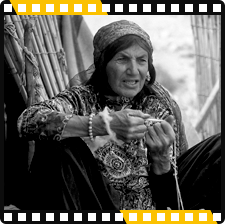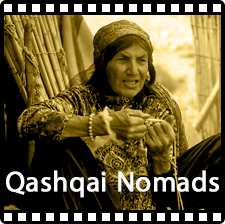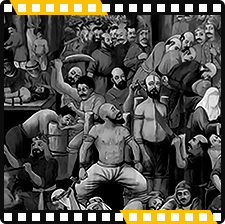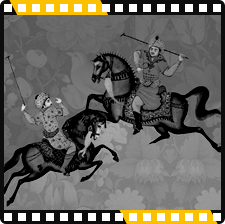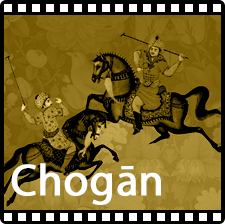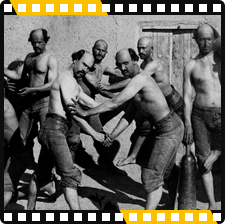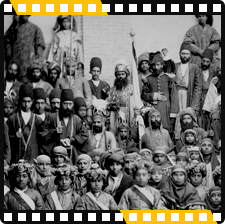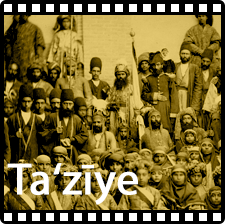Research Documentary Film of Intangible Cultural Heritage
The “intangible cultural heritage” means the practices, representations, expressions, knowledge, skills – as well as the instruments, objects, artefacts and cultural spaces associated therewith – that communities, groups and, in some cases, individuals recognize as part of their cultural heritage. This intangible cultural heritage, transmitted from generation to generation, is constantly recreated by communities and groups in response to their environment, their interaction with nature and their history, and provides them with a sense of identity and continuity, thus promoting respect for cultural diversity and human creativity. For the purposes of this Convention, consideration will be given solely to such intangible cultural heritage as is compatible with existing international human rights instruments, as well as with the requirements of mutual respect among communities, groups and individuals, and of sustainable development.
Referring to existing international human rights instruments, in particular to the Universal Declaration on Human Rights of 1948, the International Covenant on Economic, Social and Cultural Rights of 1966, and the International Covenant on Civil and Political Rights of 1966,
Considering the importance of the intangible cultural heritage as a mainspring of cultural diversity and a guarantee of sustainable development, as underscored in the UNESCO Recommendation on the Safeguarding of Traditional Culture and Folklore of 1989, in the UNESCO Universal Declaration on Cultural Diversity of 2001, and in the Istanbul Declaration of 2002 adopted by the Third Round Table of Ministers of Culture,
Considering the deep-seated interdependence between the intangible cultural heritage and the tangible cultural and natural heritage,
Recognizing that the processes of globalization and social transformation, alongside the conditions they create for renewed dialogue among communities, also give rise, as does the phenomenon of intolerance, to grave threats of deterioration, disappearance and destruction of the intangible cultural heritage, in particular owing to a lack of resources for safeguarding such heritage,
Being aware of the universal will and the common concern to safeguard the intangible cultural heritage of humanity,
Recognizing that communities, in particular indigenous communities, groups and, in some cases, individuals, play an important role in the production, safeguarding, maintenance and re-creation of the intangible cultural heritage, thus helping to enrich cultural diversity and human creativity,
Noting further that no binding multilateral instrument as yet exists for the safeguarding of the intangible cultural heritage,
Considering that existing international agreements, recommendations and resolutions concerning the cultural and natural heritage need to be effectively enriched and supplemented by means of new provisions relating to the intangible cultural heritage,
Considering the need to build greater awareness, especially among the younger generations, of the importance of the intangible cultural heritage and of its safeguarding,
Recalling UNESCO’s programmes relating to the intangible cultural heritage, in particular the Proclamation of Masterpieces of the Oral and Intangible Heritage of Humanity,
Considering the invaluable role of the intangible cultural heritage as a factor in bringing human beings closer together and ensuring exchange and understanding among them,
In these 5 research documentaries, we depicted some of these cultures, rituals, skills, etc.
Referring to existing international human rights instruments, in particular to the Universal Declaration on Human Rights of 1948, the International Covenant on Economic, Social and Cultural Rights of 1966, and the International Covenant on Civil and Political Rights of 1966,
Considering the importance of the intangible cultural heritage as a mainspring of cultural diversity and a guarantee of sustainable development, as underscored in the UNESCO Recommendation on the Safeguarding of Traditional Culture and Folklore of 1989, in the UNESCO Universal Declaration on Cultural Diversity of 2001, and in the Istanbul Declaration of 2002 adopted by the Third Round Table of Ministers of Culture,
Considering the deep-seated interdependence between the intangible cultural heritage and the tangible cultural and natural heritage,
Recognizing that the processes of globalization and social transformation, alongside the conditions they create for renewed dialogue among communities, also give rise, as does the phenomenon of intolerance, to grave threats of deterioration, disappearance and destruction of the intangible cultural heritage, in particular owing to a lack of resources for safeguarding such heritage,
Being aware of the universal will and the common concern to safeguard the intangible cultural heritage of humanity,
Recognizing that communities, in particular indigenous communities, groups and, in some cases, individuals, play an important role in the production, safeguarding, maintenance and re-creation of the intangible cultural heritage, thus helping to enrich cultural diversity and human creativity,
Noting further that no binding multilateral instrument as yet exists for the safeguarding of the intangible cultural heritage,
Considering that existing international agreements, recommendations and resolutions concerning the cultural and natural heritage need to be effectively enriched and supplemented by means of new provisions relating to the intangible cultural heritage,
Considering the need to build greater awareness, especially among the younger generations, of the importance of the intangible cultural heritage and of its safeguarding,
Recalling UNESCO’s programmes relating to the intangible cultural heritage, in particular the Proclamation of Masterpieces of the Oral and Intangible Heritage of Humanity,
Considering the invaluable role of the intangible cultural heritage as a factor in bringing human beings closer together and ensuring exchange and understanding among them,
In these 5 research documentaries, we depicted some of these cultures, rituals, skills, etc.
to safeguard the intangible cultural heritage;
to ensure respect for the intangible cultural heritage of the communities, groups and individuals concerned;
to raise awareness at the local, national and international levels of the importance of the intangible cultural heritage, and of ensuring mutual appreciation thereof;
The "intangible cultural heritage", is manifested inter alia in the following domains:
Oral traditions and expressions, including language as a vehicle of the intangible cultural heritage;
Performing arts;
Social practices, rituals and festive events;
Knowledge and practices concerning nature and the universe;
Traditional craftsmanship.


